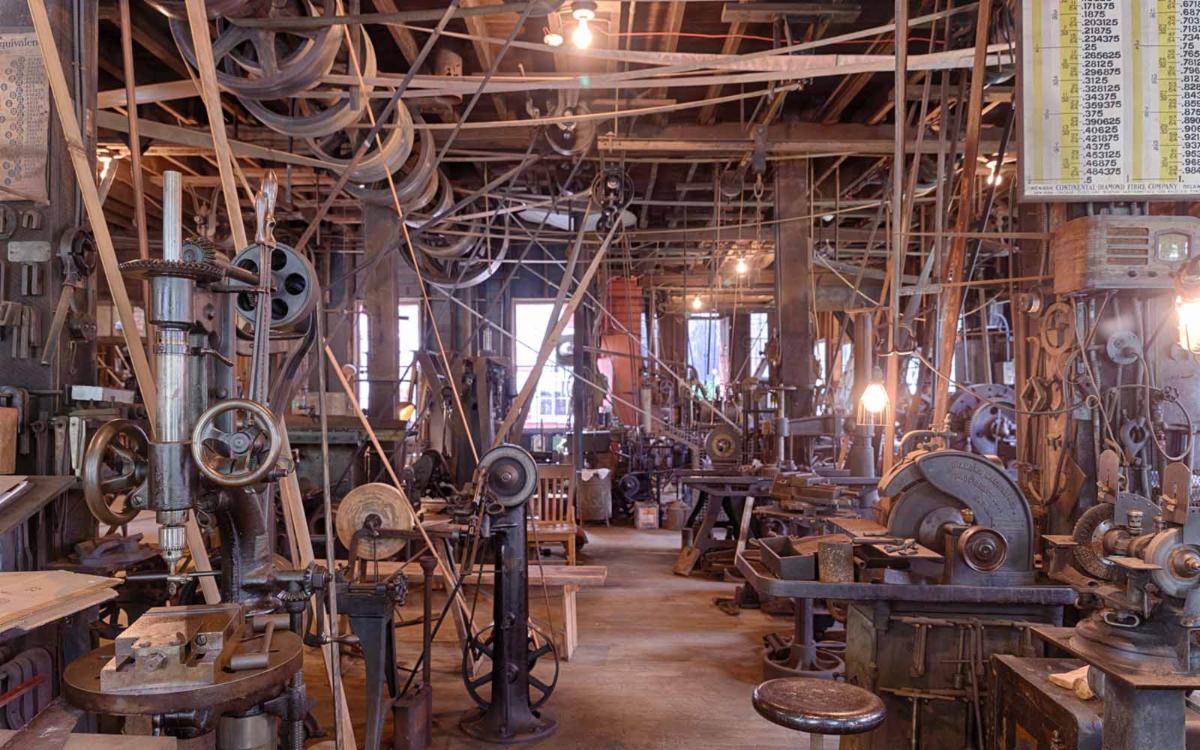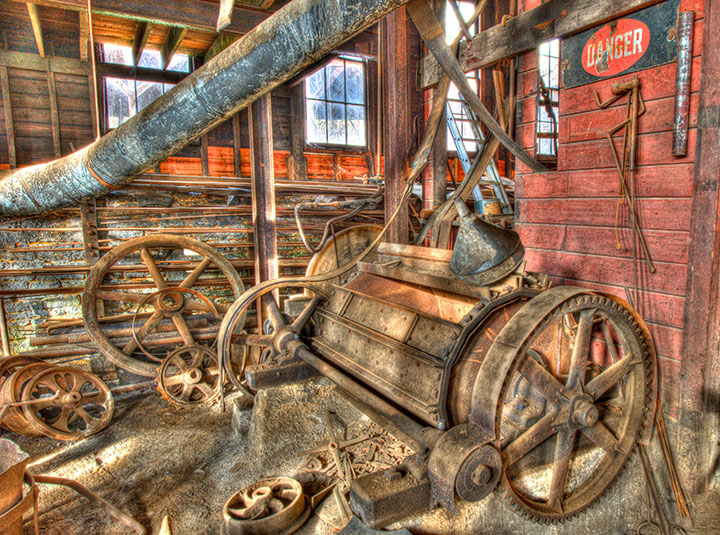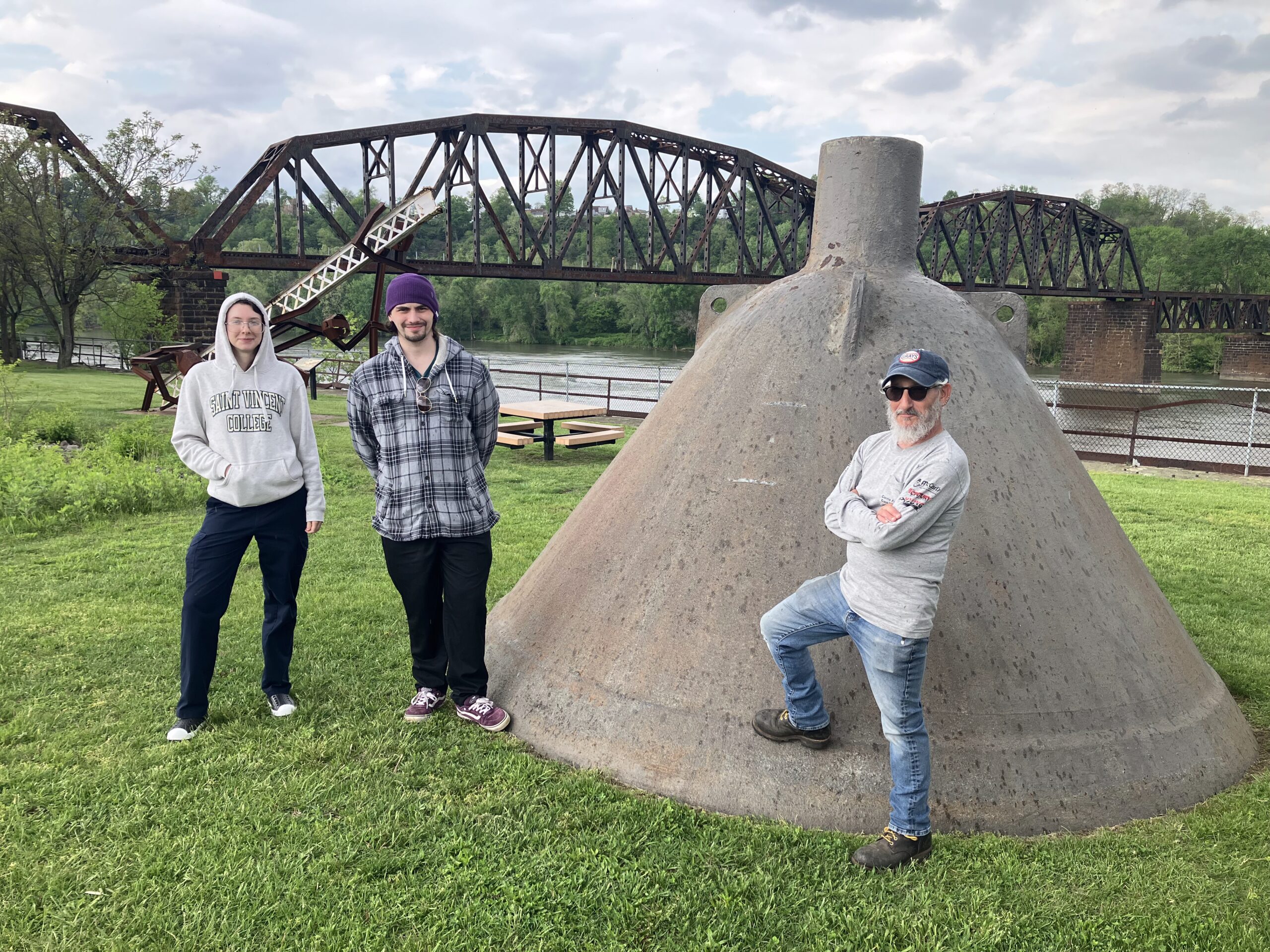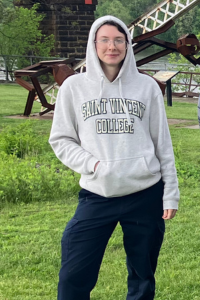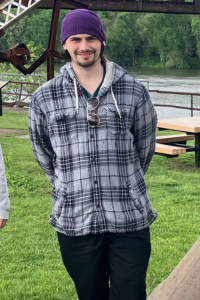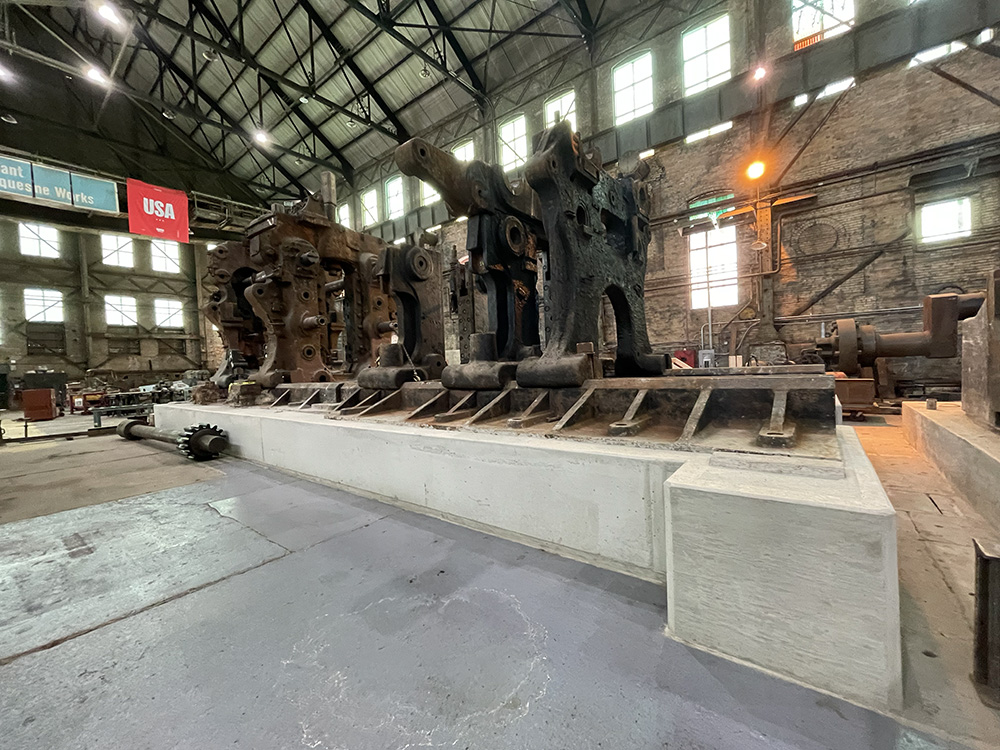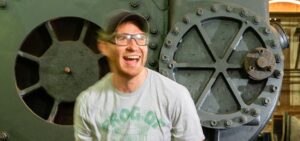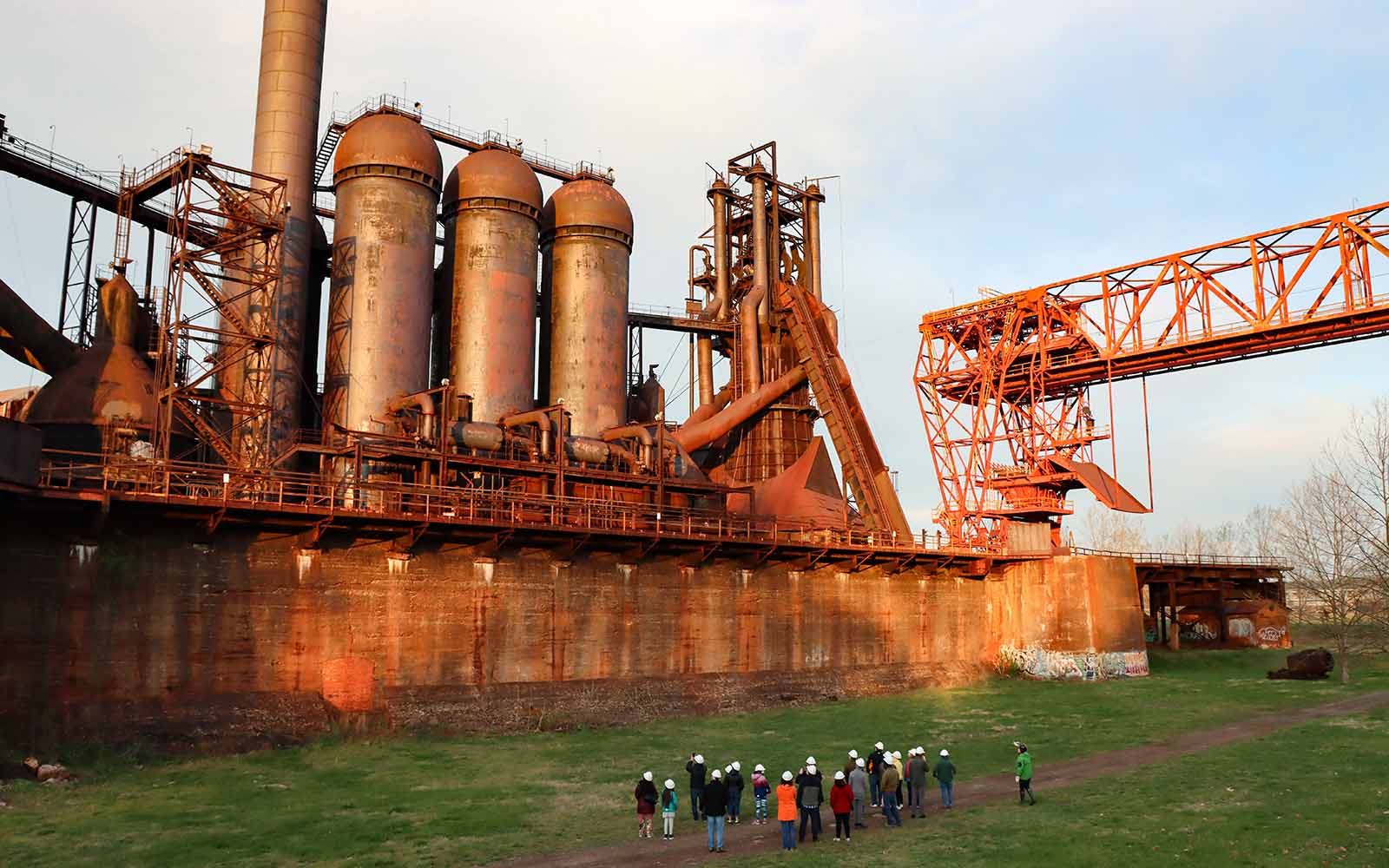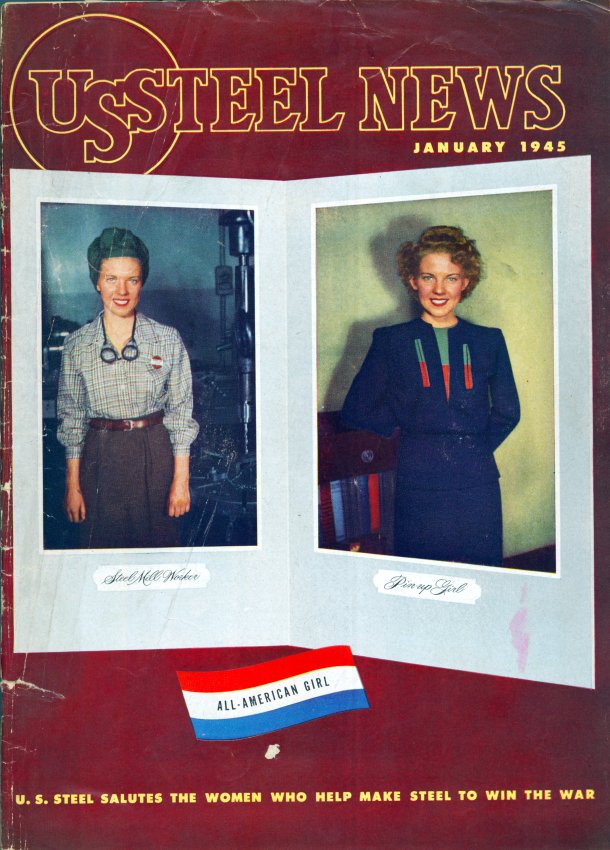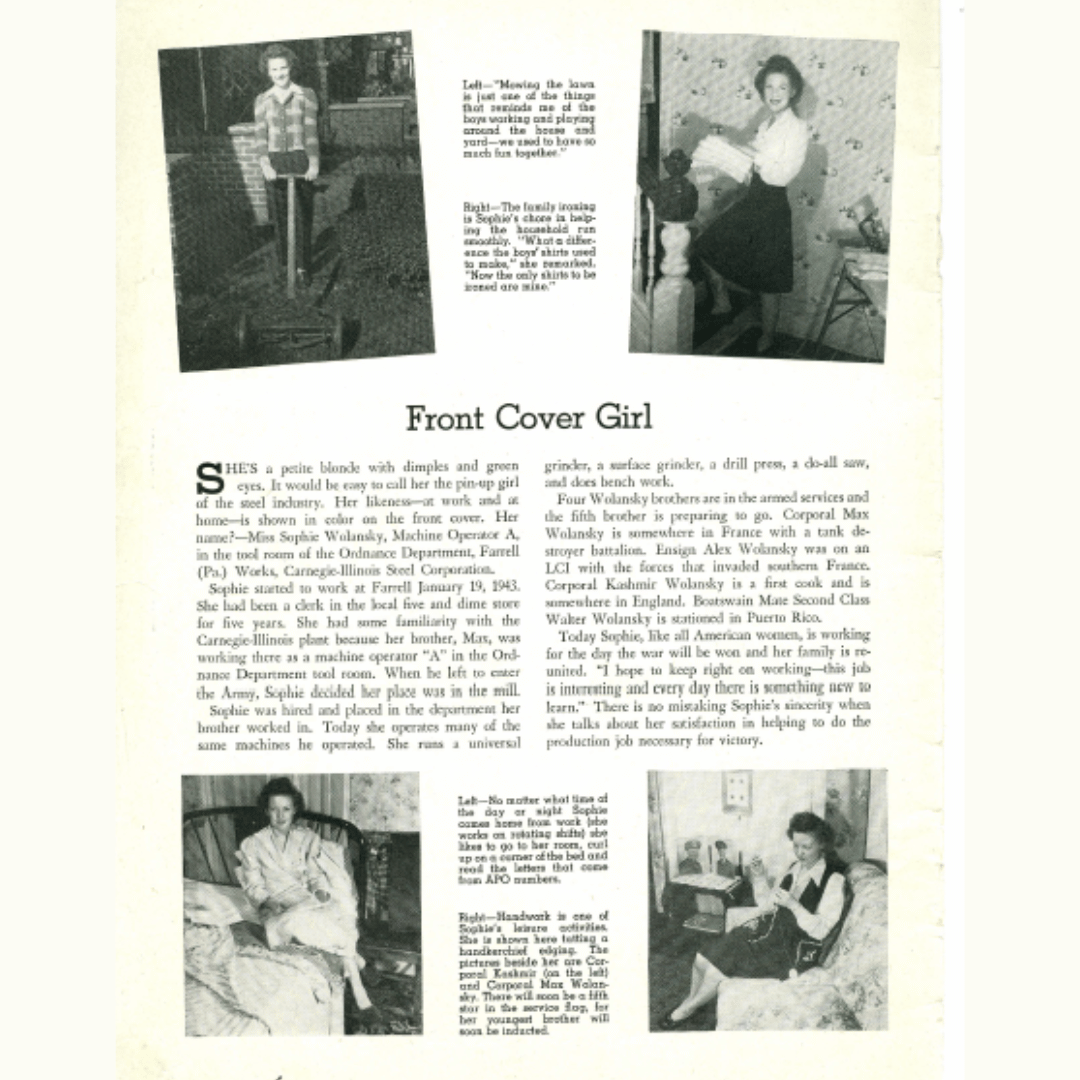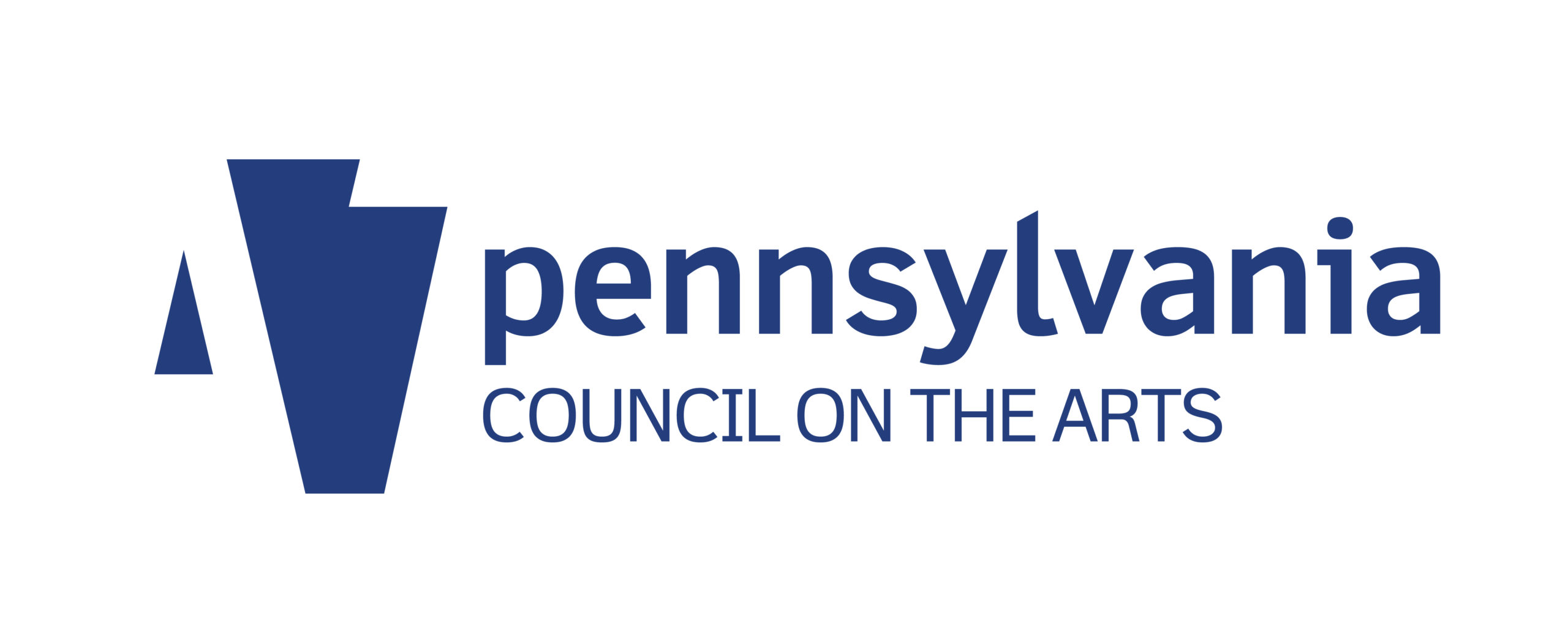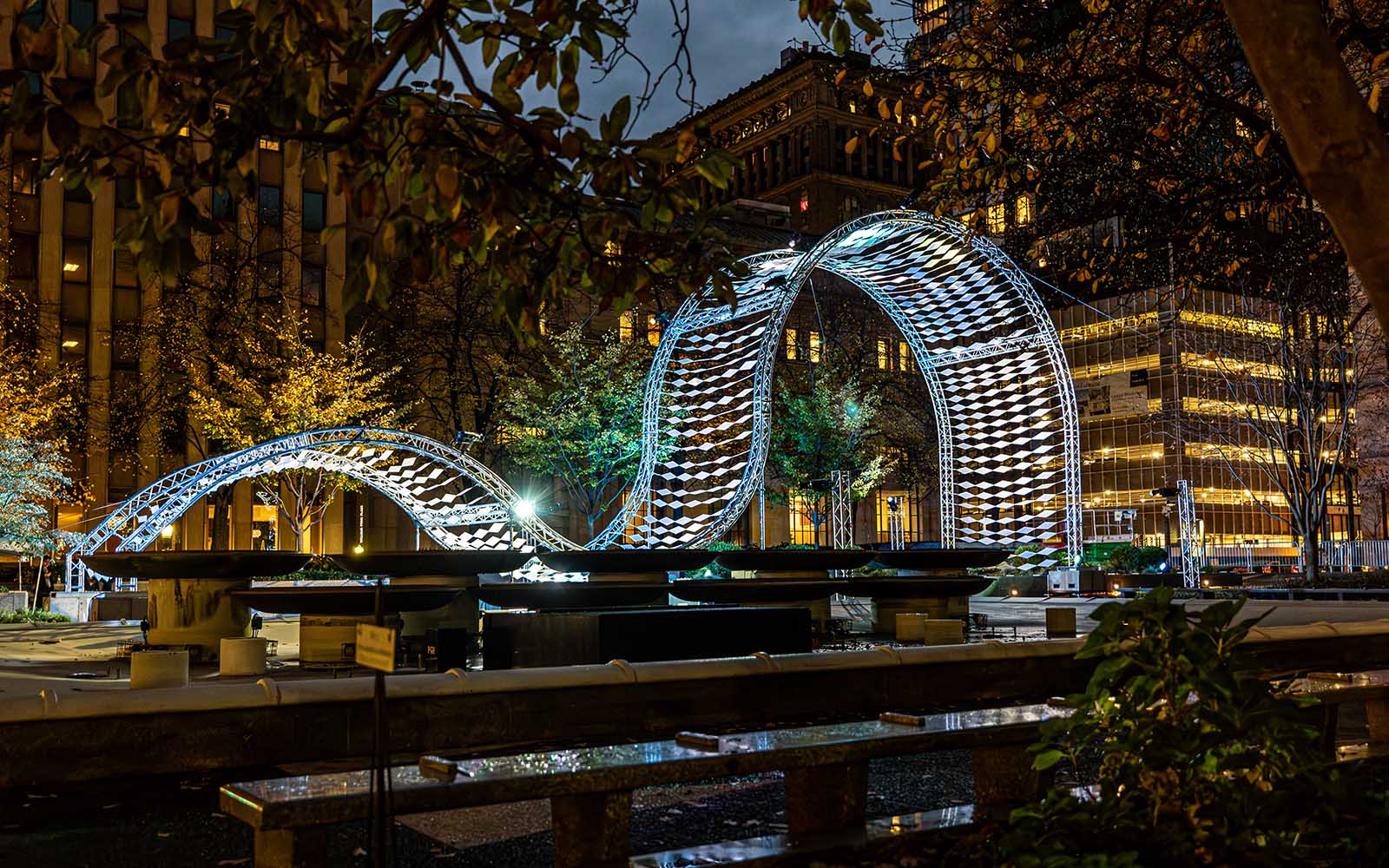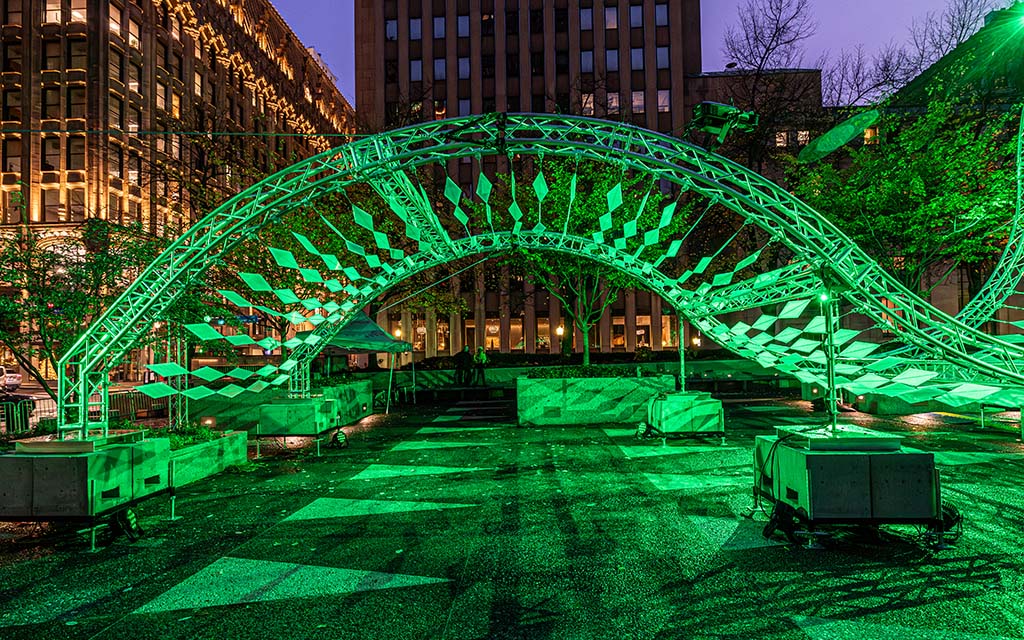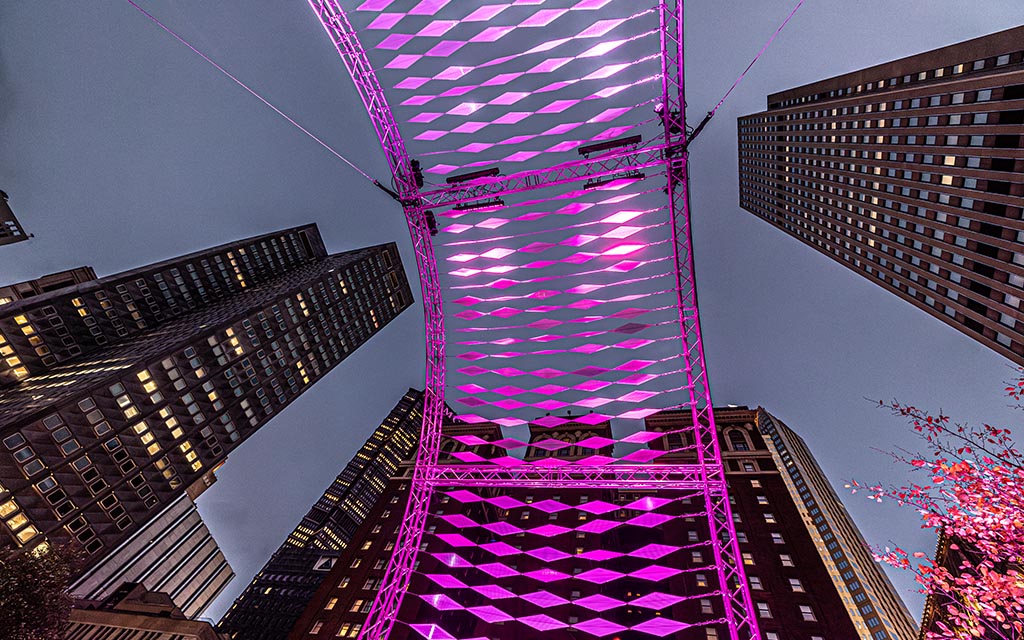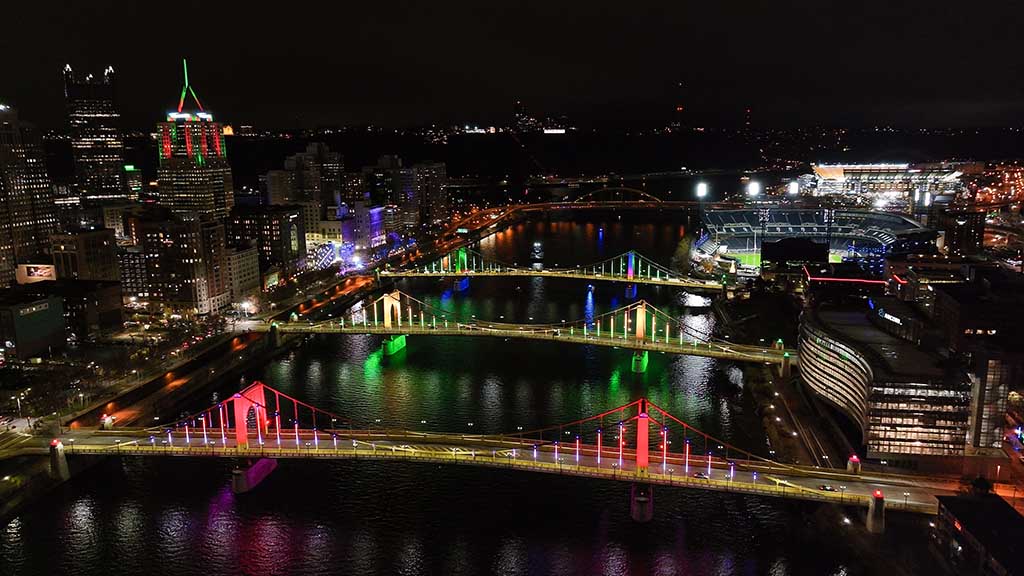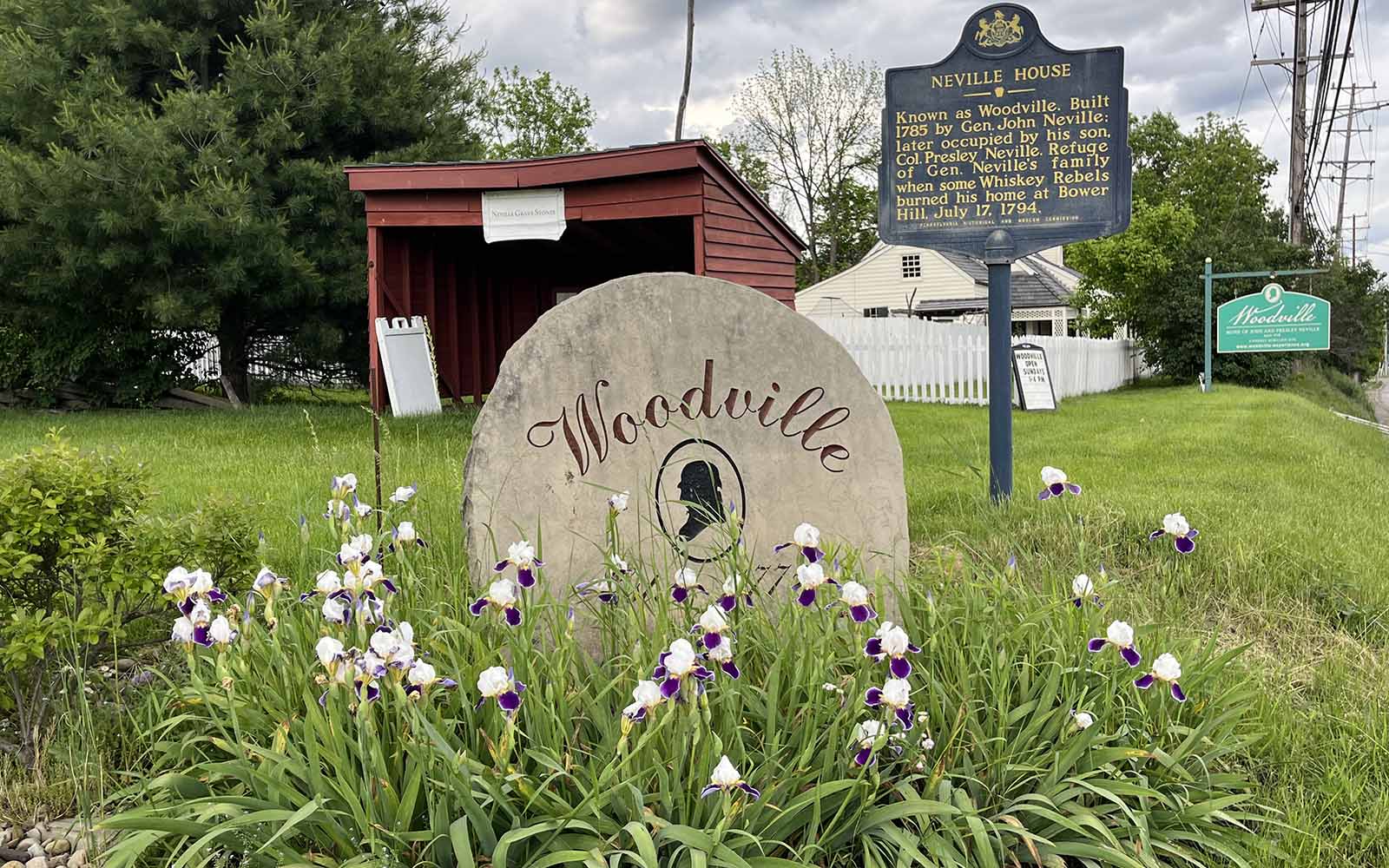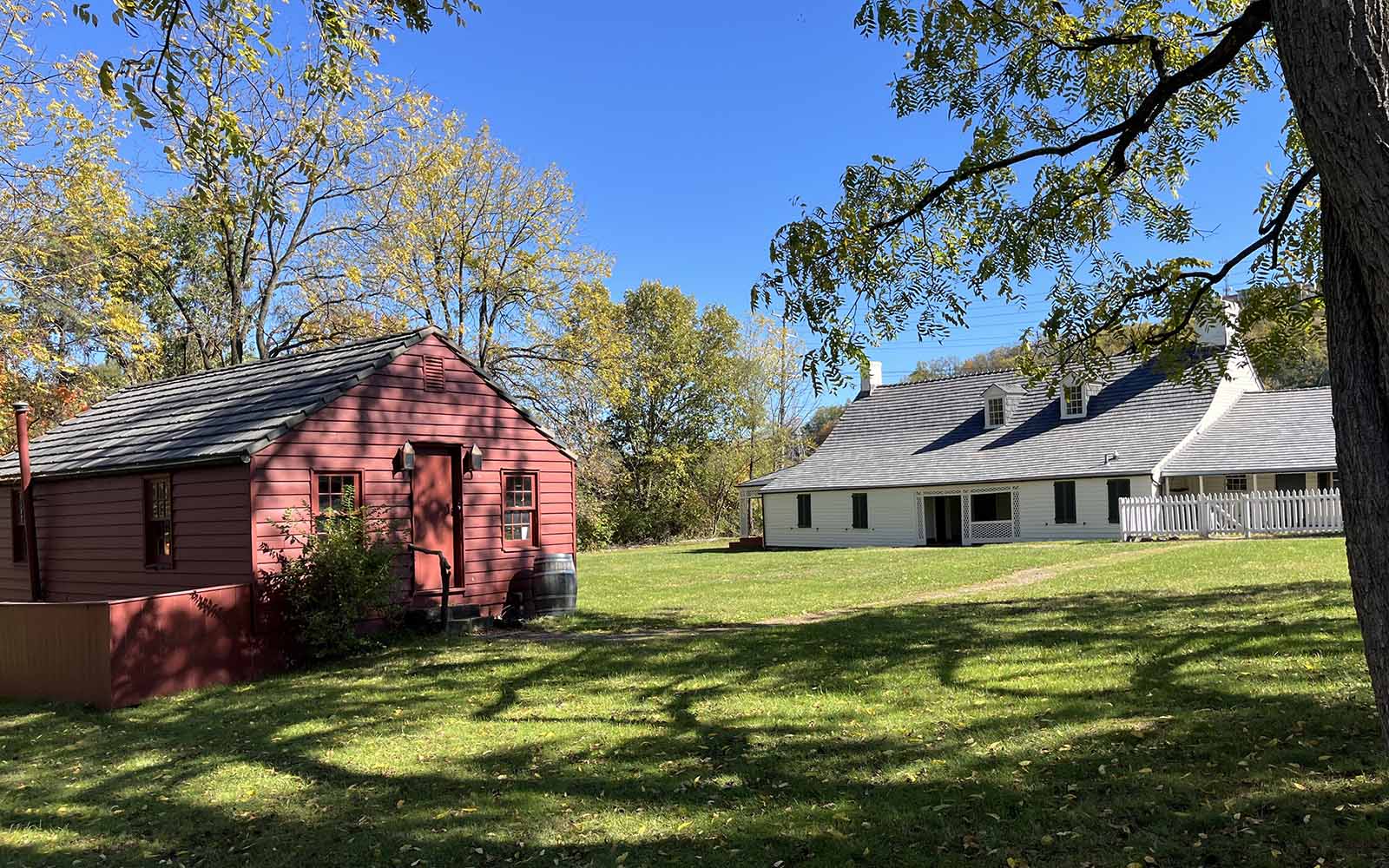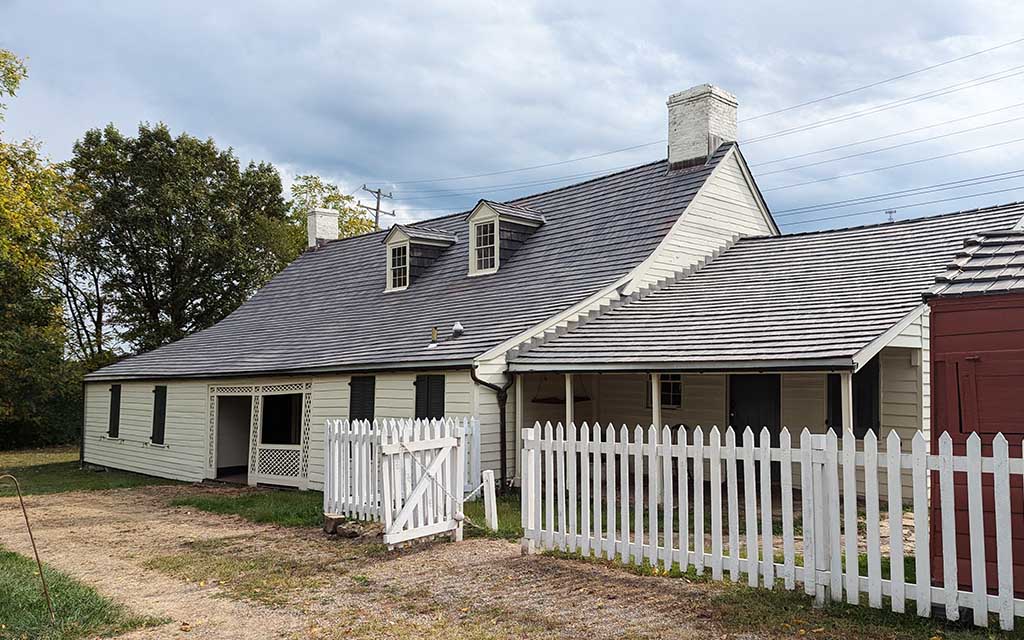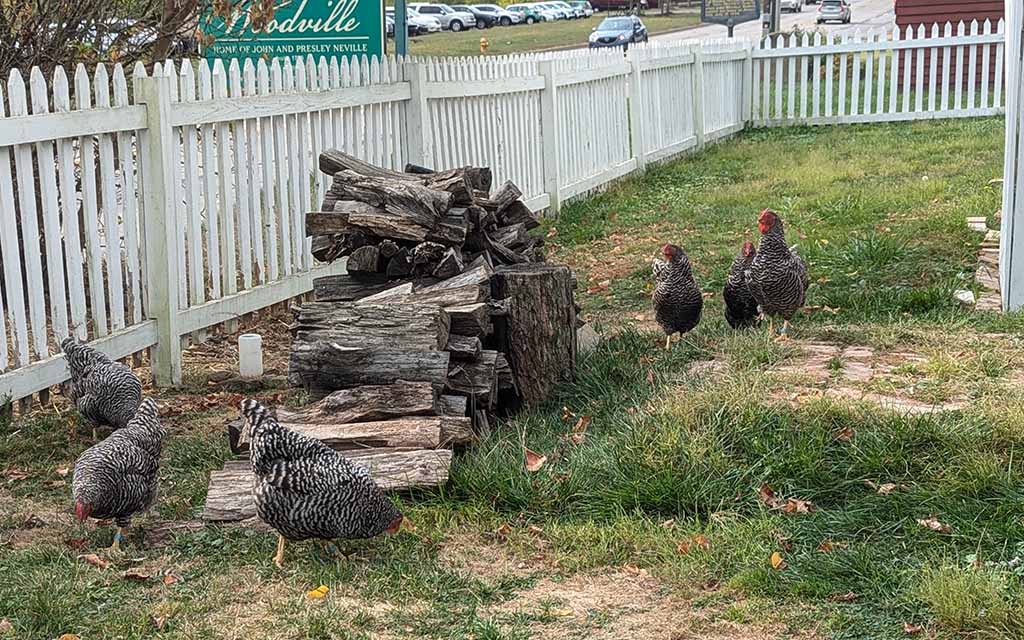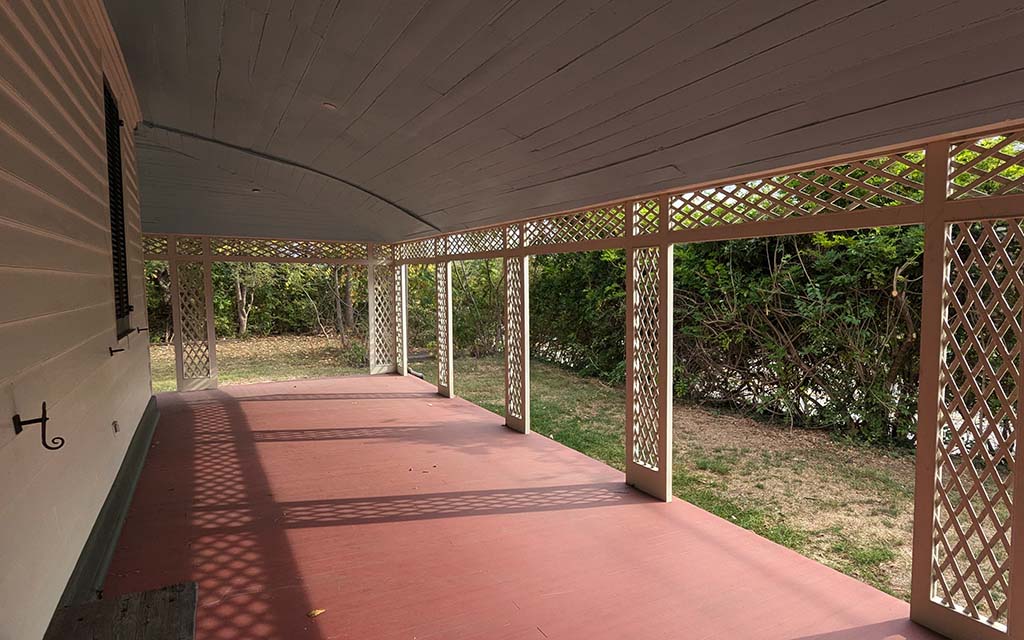From the Archive: Women Going to Work in WWII
Dr. Kirsten L. Paine
World War II profoundly reshaped the American labor force. With hundreds of thousands of men enlisting or drafted into military service, the threat of a substantial labor deficit loomed over wartime industrial manufacturing. This afforded women an almost unprecedented opportunity to obtain work in the steel industry. Many of the women entering steel mills possessed no prior experience in factory work. Prior to World War II, only lower working class women, poor women who made up the true laboring class in the United States, worked in factories. Most working class women were largely confined to domestic jobs like housekeeping, cooking, sewing, and laundry. Middle class women who wanted to work outside the home found professions considered appropriately feminine, like teaching and nursing.
Perhaps the most indelible image of women’s wartime work is the famous “We Can Do It!” poster, and it features the character now known as Rosie the Riveter. She is a fixture of American pop-iconography. The impossible-to-forget woman embodies brute strength, mental fortitude, and the commitment required to fulfill her patriotic obligation. She fills most of the frame with her flexed bicep in the foreground, emphasizing her physical fitness. Her gaze, direct and unblinking, dares the viewer to challenge her. Her face, pretty with full makeup and pinned hair, subtly eases hesitation with the concept of a woman working in a traditionally male profession. The message is clear: women, work harder. Pick up the tools and carry on.
The poster’s proclamation “We Can Do It!” resonates at a profoundly universal level. It speaks to the inherent human capacity for overcoming challenges and achieving goals through unwavering determination and perseverance. For some people, it represents commitment to a common cause and the necessary inclusion of everyone in order to succeed. For others, the poster is a testament to resilience. For many, the poster’s imagery has become a visual shorthand for women’s empowerment, feminist ideals, and the transformative power of women’s collective action. For Pittsburgh, this towering woman was born here in Allegheny County, along the banks of the Monongahela River Valley.
J. Howard Miller was a graphic artist who lived in Pittsburgh. The Westinghouse War Production Coordinating Committee within Westinghouse Company commissioned him to paint a series of posters aimed at boosting morale. The Westinghouse employees, many of whom were women, were inspired to work harder, produce more, and buy war bonds. Interestingly, the original “We Can Do It!” poster circulated only within Westinghouse for two weeks in February 1942 before being replaced with the next in the series.
The “We Can Do It!” poster resurfaced after World War II and gained incredible visibility by the late 1980s. For decades, many women have claimed to be the inspiration for Miller’s character, but a United Press International photograph of a woman Naomi Parker Frayley, a Naval worker in California, seems to be the likeliest candidate. There were approximately six million Rosie the Riveters during World War II; thousands of them worked up and down the Monongahela River Valley.
Rivers of Steel has collected and preserved artifacts and stories about some of these women in the archives. Part of the collection includes a large print run of US Steel News magazine which is a fascinating industry publication designed to communicate cogent, cohesive company-wide messaging across all US facilities. The World War II era issues occasionally highlight women working in US Steel plants across the United States.
A 1944 issue of US Steel News profiles a twenty-two year-old woman named Martha Hamilla. She lived and worked on her family’s farm in Perryopolis. Nearly every day Hamilla walked from her house to the nearby road and waited for a share-a-ride to take her all the way to the National Tube Company Christy Park Works in McKeesport where she charged 105 millimeter shells in an annealing furnace. The reporter followed Hamilla around the farm while she worked because she had no time to stop for a chat, even pushing a stubborn bull out of the way so they could walk through the field. “I’ve felt my help in manufacturing shells is really important,” she says, but it is clear that working with her family to provide sustenance by way of the land is equally valuable. The article stresses this dual importance and depicts Hamilla working in both capacities.

The January 1945 issue features a cover with two photographs of the same woman, Sophie Wolansky, as the “Steel Mill Worker,” and the “Pin up Girl,” over the subheading “US Steel Salutes the women who help make steel to win the war.” The “Front Cover Girl” article about Wolansky praises her work as a machine operator who can competently use a variety of tools, including a “universal grinder, a surface grinder, a drill press, a do-all saw, and bench work.” The praise for her work ethic is tempered by emphasis on Wolansky’s brothers– all in the military– and her own domestic pursuits away from the plant, like needlework, laundry, and letter writing. The article serves a dual purpose for readers. For women in Wolansky’s position, the feature boosts morale by recognizing factory work as their patriotic commitment. For people who wonder if manual labor might change a woman, mentioning her craftwork and housekeeping assuage that fear.
Magazines, as examples of material culture, are tangible representations of historical trends, ideas, and interests. Oral histories are records of the intangible: memory. Rivers of Steel collects oral histories, and some of the older interviews in the archive document the experiences of local women who worked in mills like Duquesne and Homestead.

On September 4th, 2003, Susan Lineback and Julie Williams interviewed Marie Madar about her experience working as a straightening mechanic at US Steel Duquesne Works. Madar was employed at the mill from 1941 to 1944 and was one of thousands of women who found a way to bring together a sense of patriotic duty and a desire for self-sufficiency through working in industry. When asked about what she remembered about her job, Madar says, “I got a job in the heat treating dept, we had pickling, like a swimming pool for steel, we had furnaces in there where the steel was rolled through and then put into the pickling tanks, and um, straightening machines for round bars and for long rectangle bars. And we also bundled steel with tie raps and loaded them into the box cars, and whatelse…”
Throughout the oral history, Madar continuously recounts how her work at Duquesne during the war was only the beginning for her. At the time she understood that once the war ended and the men returned to factory work, she and her coworkers faced displacement. She recalls, “We were glad that the war ended, we didn’t care!” Madar’s relief in this short exclamation gives way to her need to keep working.
Over the course of her life, Madar parlayed her mill work into jobs in Homestead like Grimburkes appliance store on 8th Ave. and the A&P on 7th. Madar took that experience with her when she and her husband moved to Twinsburg, Ohio. The interview continues as she lists her lifetime of work:
I went to a factory after that, I went to a diaper service where I worked in the mail department where I typed out plates just like your credit plates or anything else. From there I went to Ken Collin’s that was a factory, and that had to have been during some other war that we were involved in…I handled papers, it was the atomic thing. And, I took care of the mail room there, and um, and then we moved up to Twinsburg and I got a job at the telephone company and I worked in bookkeeping, and then I had my last child and I took a couple months off after she was born and then they called me back and I was a telephone operator for Western Reserve Telephone Company. And then I worked in a window replacement where they change the windows, the storm windows and stuff. From there we moved here and I got a job at Pickera XRay and I worked on the first MRI in Ohio. And that’s me. I retired from there. I have a list of work a mile long! But I liked to work, I loved it!
Madar talks amiably about work and how much she enjoyed the physicality of it– the lifting, the stacking, the rolling, feeling the heat from the open hearth furnaces lick at her body, the sweat– and she even brushes off an incident where “rolling Steel bars on skids, you know those wooden skids, I was rolling it and it rolled off the skid onto my foot and I got hurt then and that was it.” She was driven by the love of work itself.
Most of Madar’s oral history, however, is specifically about her experiences at US Steel Duquesne Works. She recalls working with men too old for the draft and working side by side with other women like her, especially the wives and mothers who felt called to the life of the mill. When asked about her memory of the first day she set foot in Duquesne as an employee, she recounts:
The first thing I remember was I was hired on Memorial Day and they walked us through the mill, through a portion of the mill, it was a short portion. And um, it was 11 o’clock in the morning when we were walking through, they had the whistle blow and the church bells were ringing, and we were told to bow our heads and pray because it was during the war. That I’ll never forget, that was so touching.
Marie Madar died in 2014 at the age of 91.
Regina Kowalski was looking for an outlet for her anxiety and aimlessness following her husband’s enlistment in 1941. At the time her brother-in-law worked as a police guard at US Steel Homestead Works and suggested she might find a job there. Kowalski took him up on that offer and made three streetcar changes all the way from her home in Sharpsburg.
In her 2003 oral history, Kowalski says that her application to work at Homestead was initially rejected because she was underweight, but she persisted. She says, “So, I begged them, I’d been everywhere. He says, “okay, we’ll get you heavy shoes.” And with that, she was hired. Kowalski candidly remembers:
We had to wear steel toed shoes. We had to go through a check up, everything checked good except my weight was a little light. But then they gave you these heavy pull on overalls and glasses and you had to have your hair all covered and steel toed shoes before they let you go through the mill. Then they give you some test, how to put things together and this and that. Just like children. We thought we were children playing with toys.
With a war on and steel production ramping up to meet American military needs, the dismissal and skepticism Kowalski encountered gave way to the urgency of the national task. Kowalski says, “So we went into the mill, and it was scary at first. But then we went into a labor gang, we had to start […] They had emptied box cars of brick for the furnaces.” So Kowalski and her coworkers picked up bricks and started carrying the load.
Parts of her interview focus on how she tried to maintain a sense of her own life beyond the anxiety of waiting for her husband, John, to write to her. When asked about what she took for lunch, she answers, “Well, I’d take a sandwich or whatever, and a piece of fruit or a vegetable,” and then brings her memory back to the waiting and wondering: “Of course at that time you didn’t feel like eating a whole lot, you had other things on your mind. The war, how are they doing, your husband, how is he, I wonder what he is doing, crazy things, you know.”
Regina Kowalski was laid off in September of 1945, just after VJ Day. She remembers being let go: “the end of the war was announced, we were not allowed to go back into the mill […] All the women, the men, yes, but the women were not allowed to go back into the mill because our work was done.” She says “it didn’t upset me” because “I was happy to, […] because all the whistles were blown and everything was going on and that and everybody was dancing in the streets and that. ‘The war is over, the war is over!’ It was, well, you could cry even now when all that happened. We knew our men were coming home, the ones that were left.” John Kowalski was among those left. Did US Steel ever thank her for her work? Her service? She says yes. The women were thanked, “but we were there because we wanted to help, we didn’t even look for a thanks.”
The interviewer applauds Kowalski’s ability to recall her time at Homestead in such detail after many decades, but Kowalski shrugs off the compliment and offers up a simple, yet powerful testament to why she can conjure it up: “Because I try to still see the mill, the way it was, the way it should have been left. When I go by Homestead now I see all those buildings and all that ground and those great big stove pipes that smoke was coming through, you just can’t visualize that it went down like that.”
And when Kowalski died at the age of 102 in 2018, her obituary called her a “Rosie the Riveter.”
Women working in steel mills during World War II encountered many challenges. The work was arduous, wholly dangerous, and often involved taking shifts through two or three turns in extraordinarily hot, loud, and dark settings. They operated throughout all parts of the factory, from blast furnaces to open hearths, rolling mills, plate mills, rail mills, and machine shops. They were blacksmiths, masons, electricians, pipe fitters, finishing workers, and transported all kinds of raw and processed material. The work demanded substantial physical strength and endurance, and women met those demands. Most women were also required to simultaneously manage domestic obligations and childcare outside of working hours. Their contributions to wartime production levels proved pivotal and not only sustained US American industrial output, but also contested conventional gender roles and established a precedent for expanding women’s socioeconomic potential through the labor force.
Here are some links to consider if you’re interested in learning more about the history of Rosie the Riveter and women’s factory work in World War II.
Rosie the Riveter NPS
Library of Congress Image 1
Library of Congress Image 2
Margaret Bourke-White Essay and Photos
Listen to “Rosie the Riveter”
###
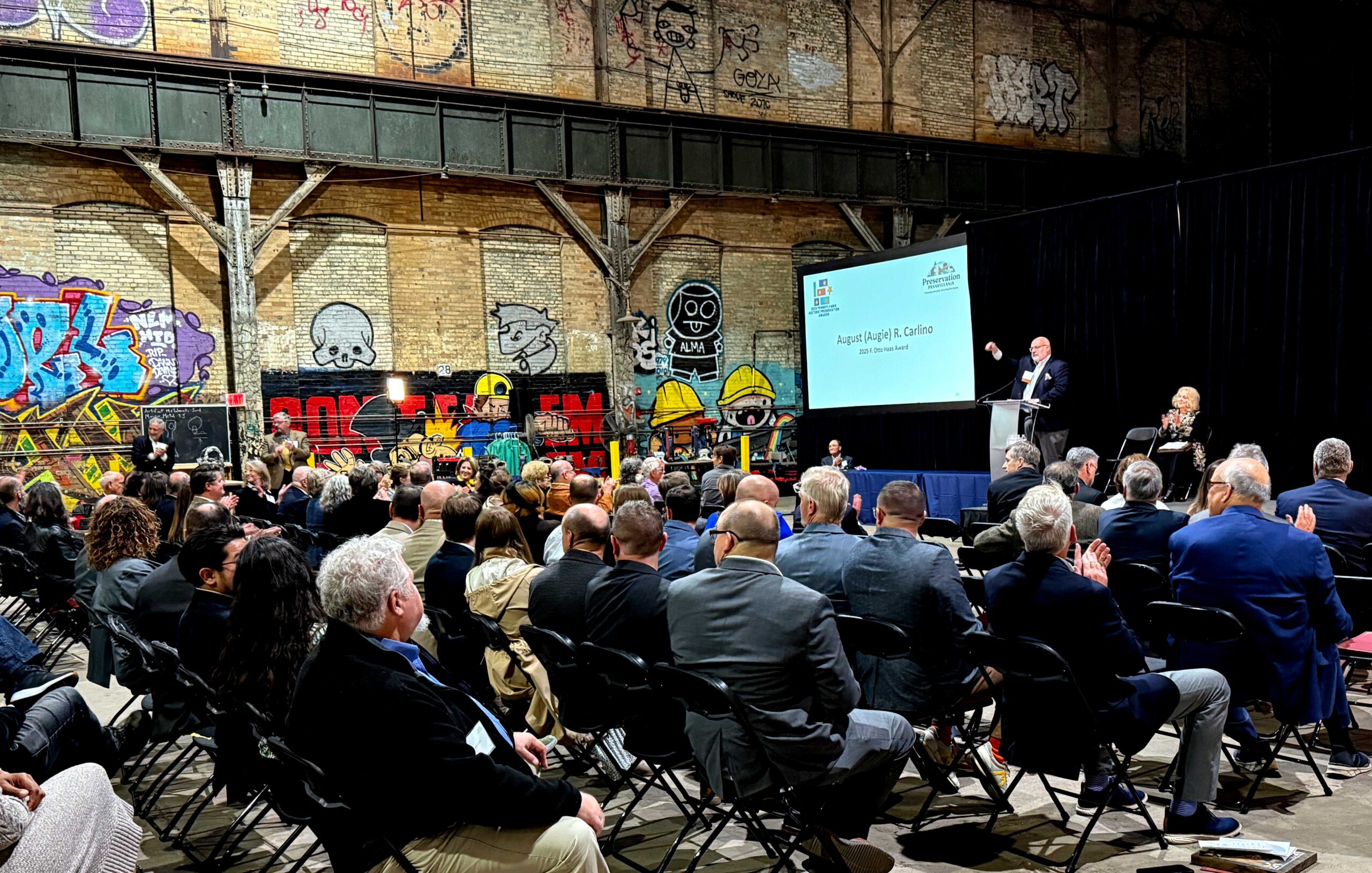
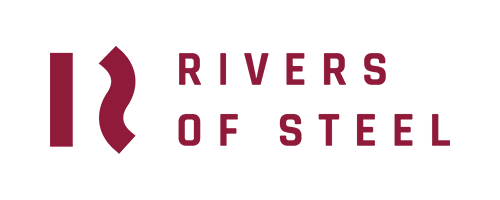
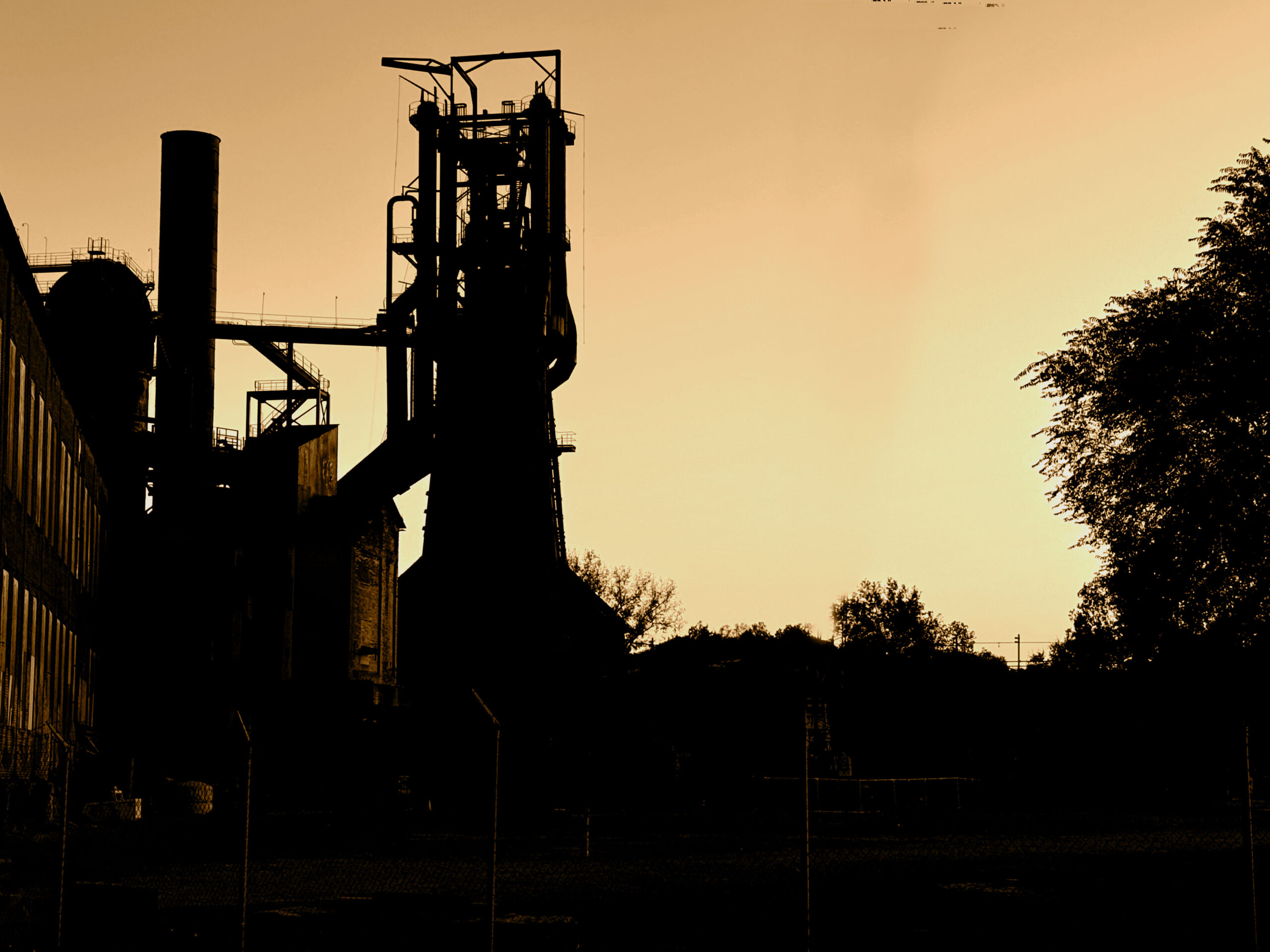
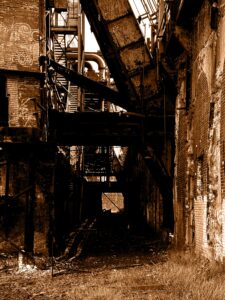
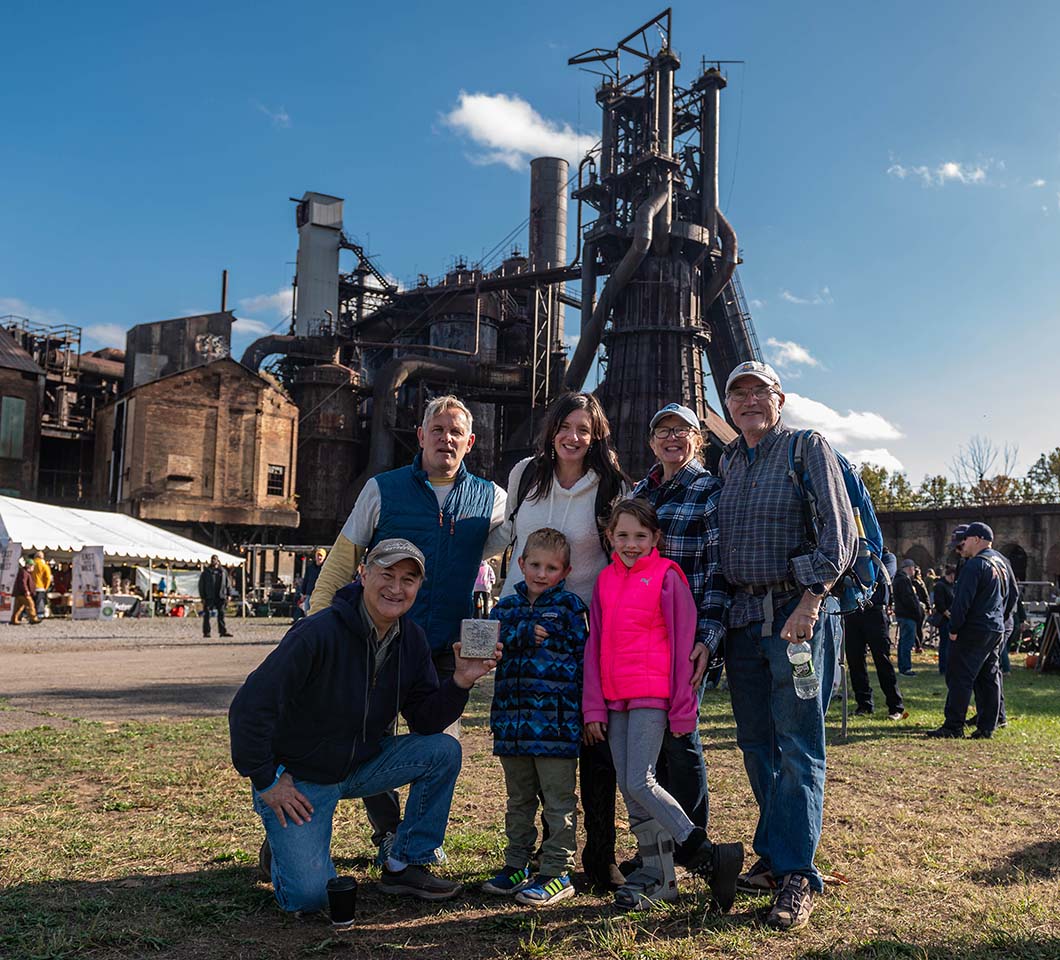
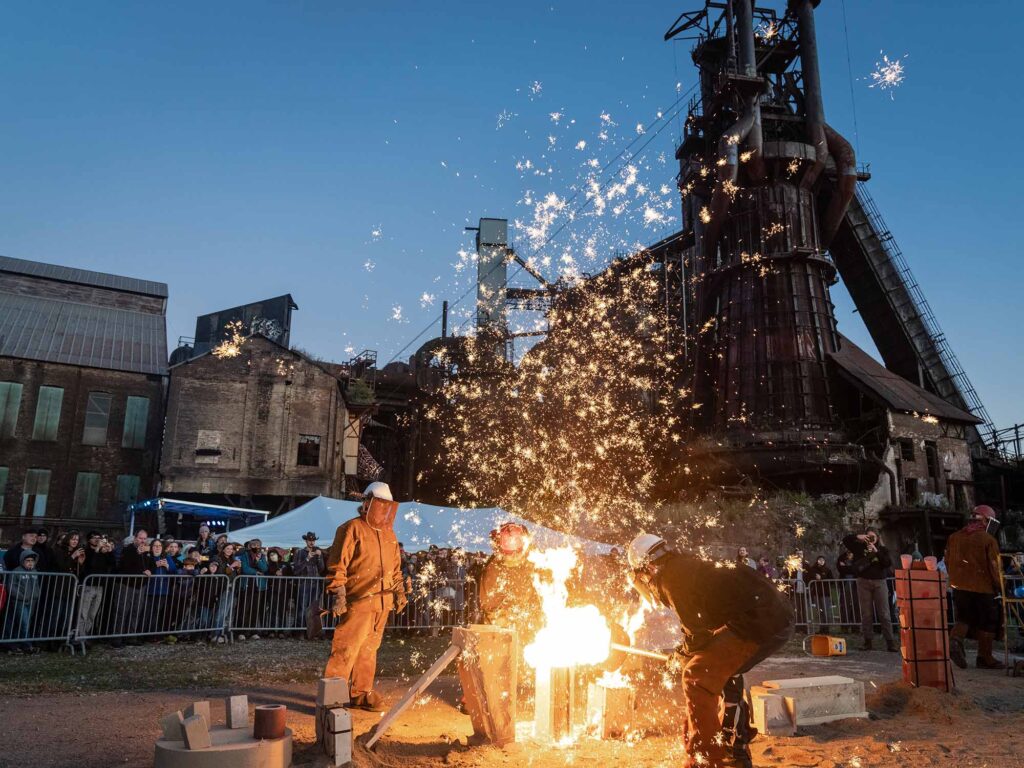

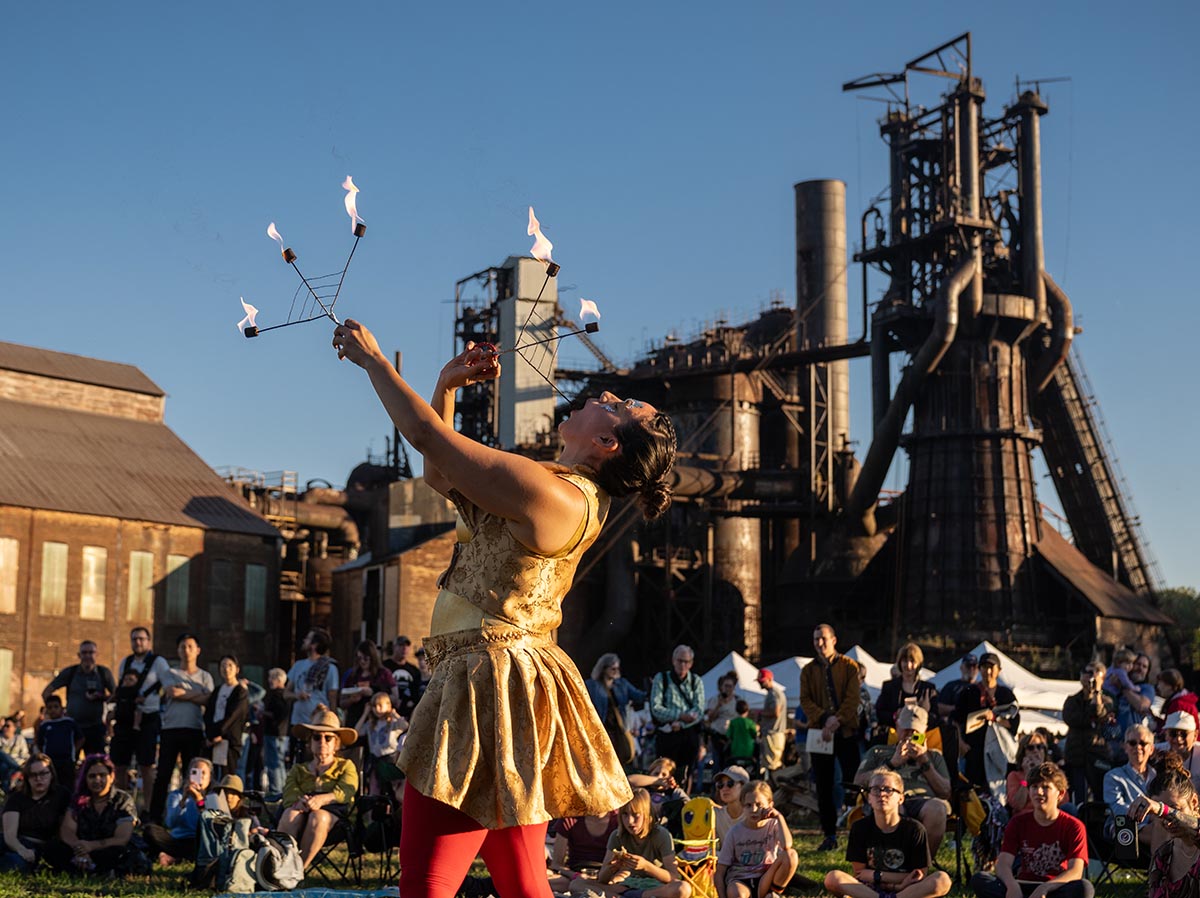
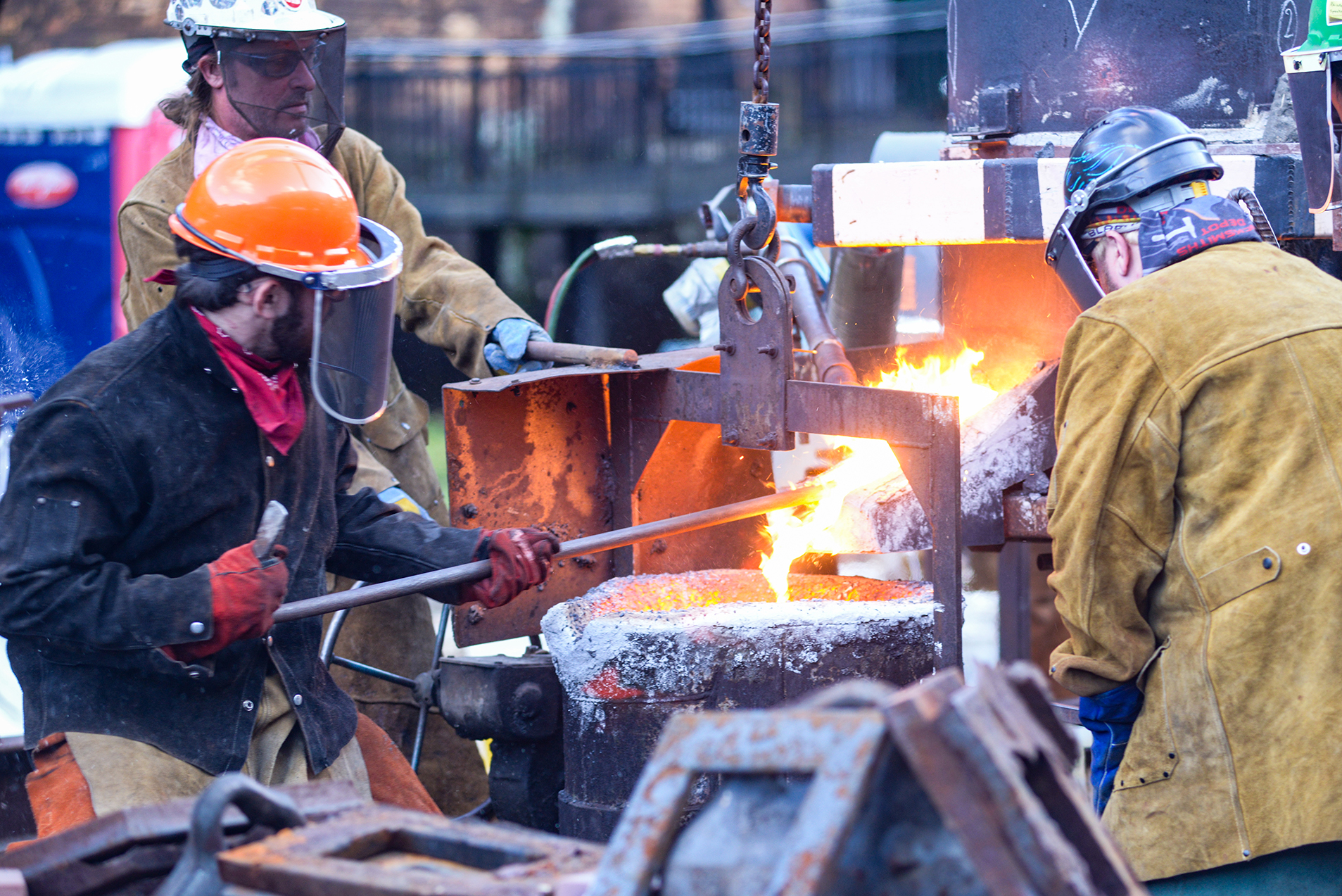
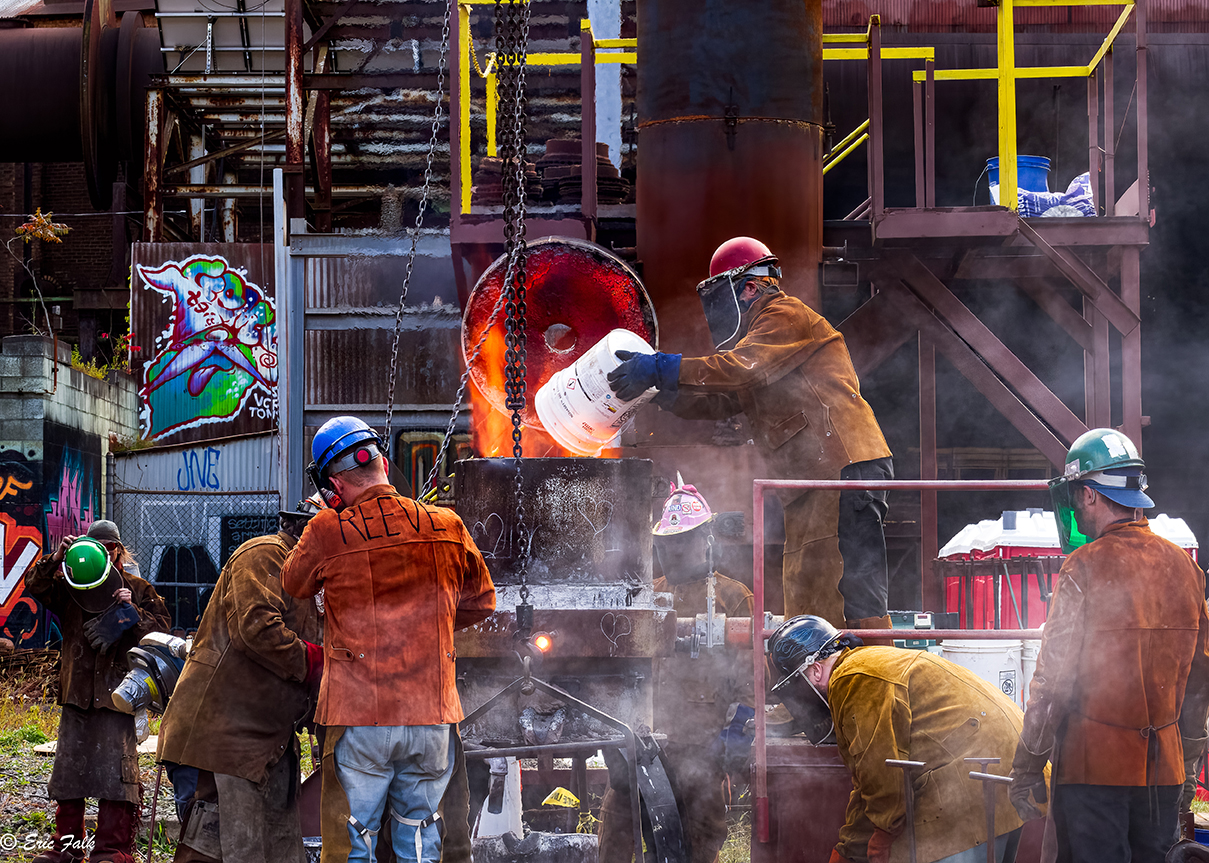 What You’ll Find Beyond the Flames
What You’ll Find Beyond the Flames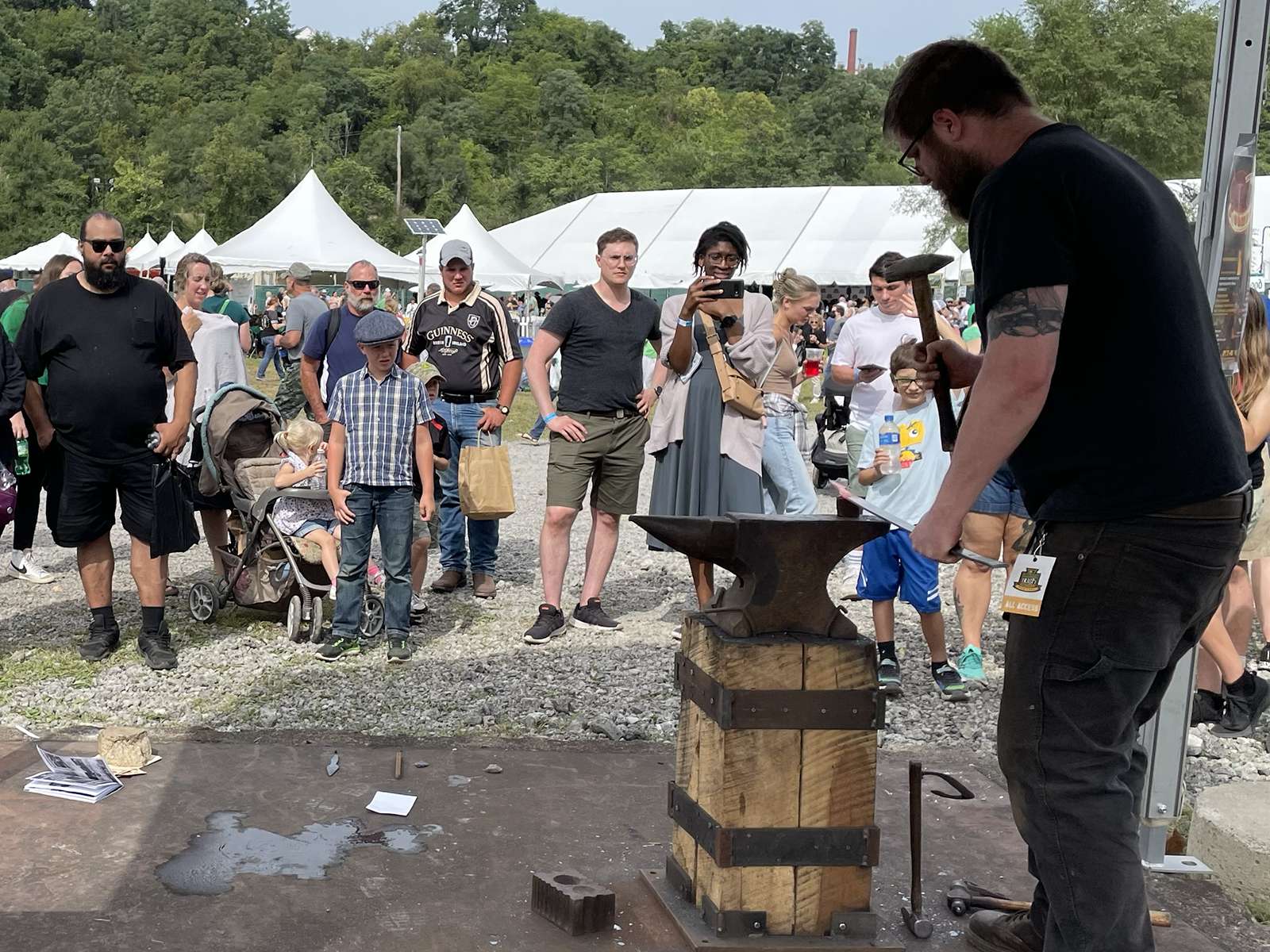 A First Festival for Rivers of Steel’s New CEO
A First Festival for Rivers of Steel’s New CEO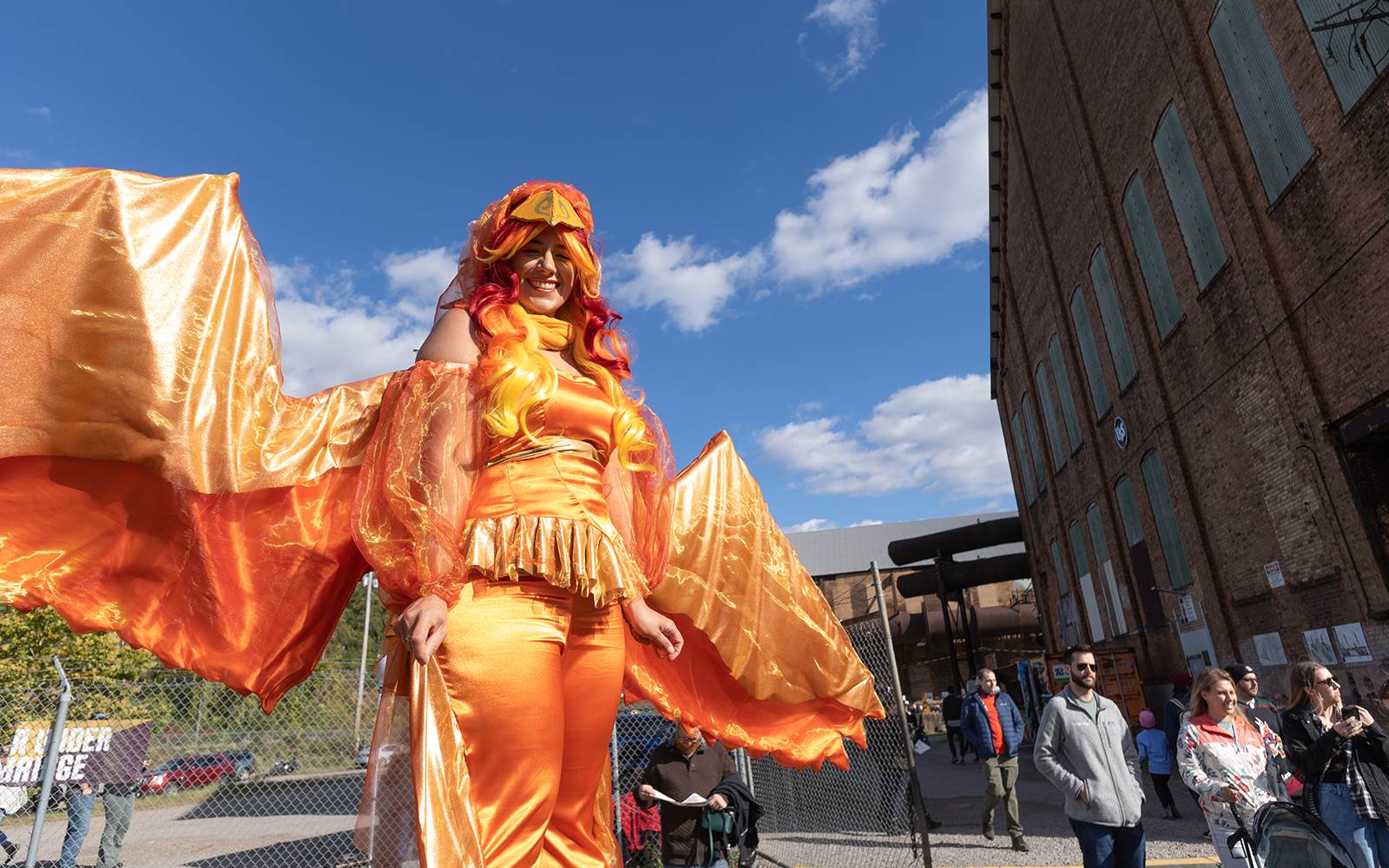 The Festival of Combustion 2025 is made possible thanks to our sponsors:
The Festival of Combustion 2025 is made possible thanks to our sponsors: 